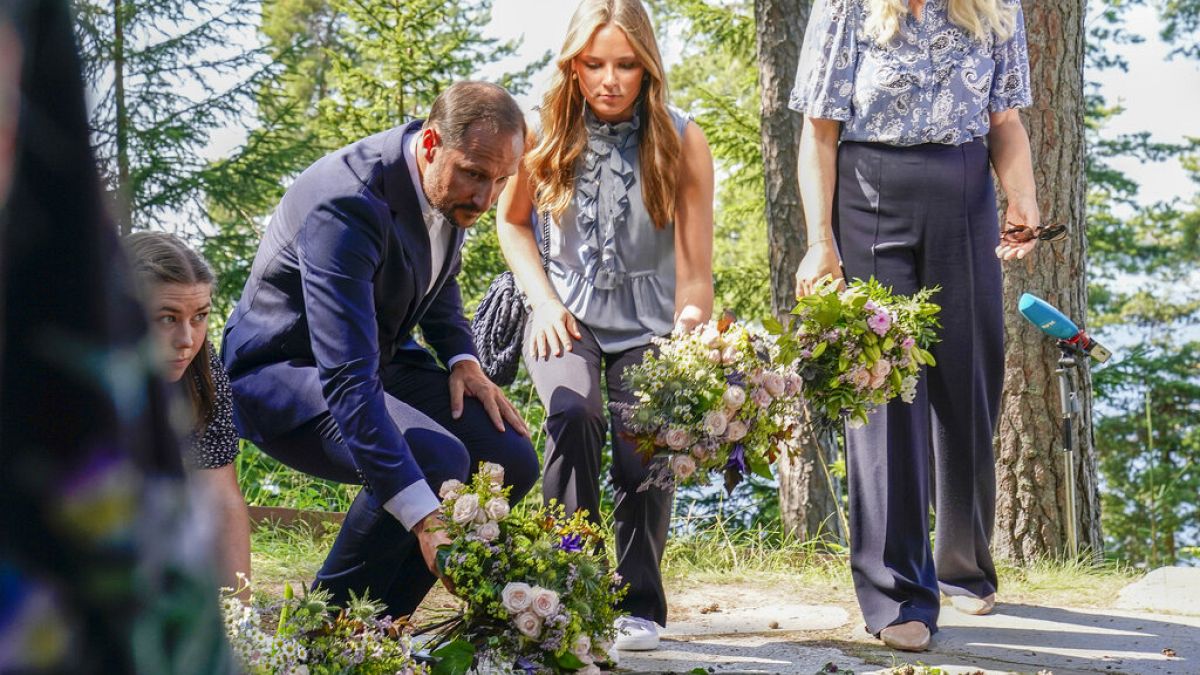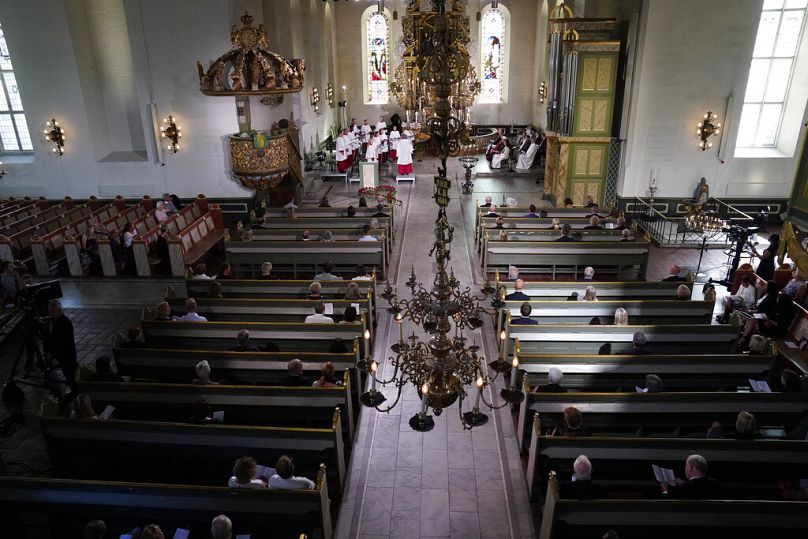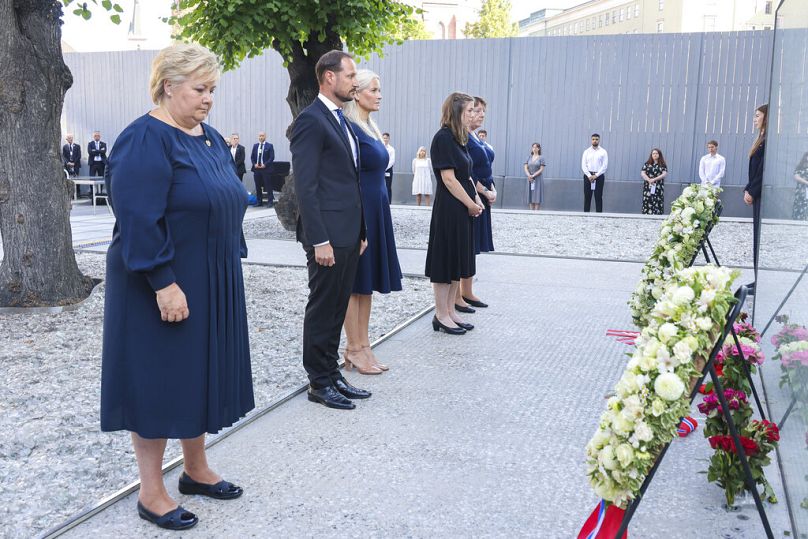On July 22, 2011, right-wing extremist Anders Breivik set off a bomb in the capital, Oslo, killing eight people, before heading to tiny Utoya island where he stalked and shot dead 69 mostly teen members of the Labor Party’s youth wing.
Church bells rang out across Norway on Thursday to mark the 10th anniversary of the country's worst terror attack in its recent history.
On July 22, 2011, right-wing extremist Anders Breivik set off a car bomb in the capital, Oslo, killing eight people in the government quarter.
He then took a ferry to Utoya island, where he shot dead 69 mostly teenaged members of the Labour Party’s youth wing (AUF), who were there for an annual summer camp.
On Thursday, ordinary Norwegians, victims and their families, politicians and world leaders took part in commemorative events a decade on from the slaughter.
Many added their voices to the call for renewed efforts to keep combating the extremist beliefs behind the attack. Speaking at an evening memorial service at Oslo Cathedral, where the names of each of the 77 victims were read out, the country's King Harald more needed to be done.
At the service, the King said he hoped Norwegians "can help each other live the lessons from July 22 every day, in everything we are and do."
“At the same time," he added, "we must acknowledge that we as a society have not done nearly enough to see, to help, to carry the burden together, and to counteract the dark forces. I am sorry about this.”
Thousands gathered outside the cathedral during the service. Jens Stoltenberg, who was prime minister at the time of the attack, told the congregation: “10 years ago, we met hatred with love, but the hatred is still there.”
“The perpetrator was a right-wing extremist," he added. "He misused Christian symbols. He grew up in our streets, belonged to the same religion and had the same skin colour as the majority in this country. He was one of us. But he is not one of us, who respect democracy. He is one of those who believe they have the right to kill for their political objectives."
Mother of Utoya victim: Our children would be proud and disappointed
Wreaths were also laid at a commemorative event on Utoya itself, near the site of a planned memorial to the 77 victims.
The parents of some of the 77 victims were present and reflected on how Norway has coped since the atrocity.
Lisbeth Kristine Roeyneland, whose daughter Synne was just 18 when she was killed by Breivik, said if she were alive she would be "disappointed" to know that "the public debate in many ways has moved in the wrong direction."
But she added: “I also think they would be proud of us. Proud of how we reacted in the days after the attack, and how our state, under the rule of law, firmly stood its ground in the face of brutality.”
Astrid Hoem, a survivor of the attack who leads the AUF, urged Norway to face up to racism in the country. "It's our responsibility to do so," she said. "Ten years on, we must speak the truth. Far-right extremism is still alive."
Crown Prince Haakon and Prime Minister Erna Solberg also attended the gathering on Utoya. Solberg said it hurt to think back to “that dark July day”. "A whole nation was struck," she said. "We rose again. But Norway was changed by an experience which still causes pain.”
Small boats dotted the water around the island, a reminder of the attempts many residents made to rescue people 10 years ago while Breivik fired toward them.
Flowers like those laid on Utoya have become a symbol of the country’s response to the attack, when roses were piled outside Oslo Cathedral in the days after the slaughter.




